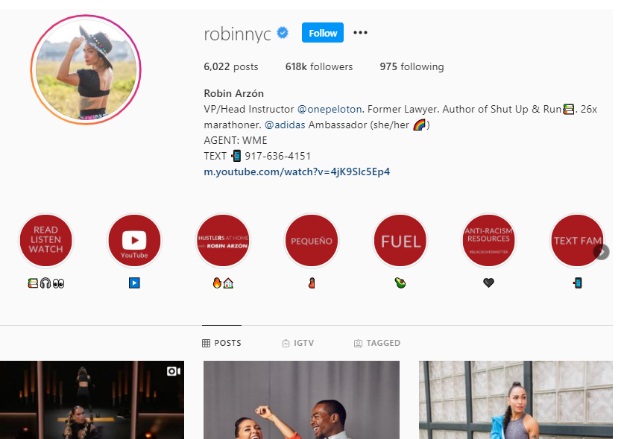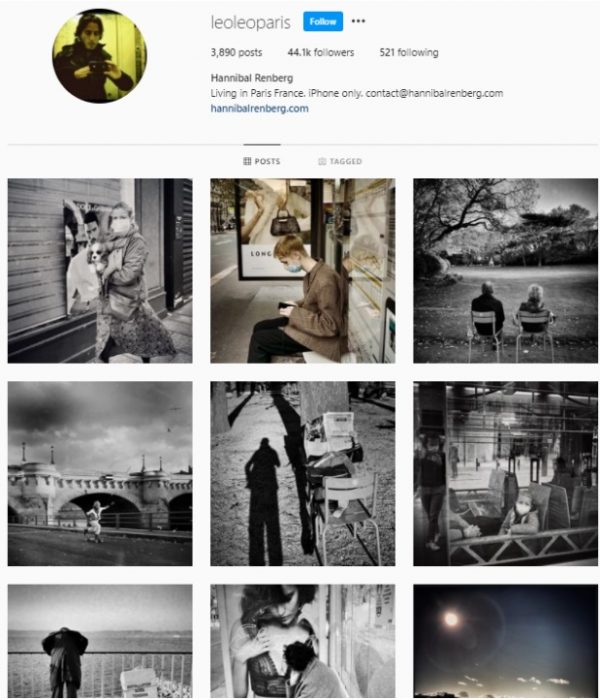how to become a blogger
There are over half a million influencers on Instagram. From nano-influencers to power bloggers, they earn from $100 to nearly $800 per piece of content. Looks like a good enough motivation to become a professional blogger on the platform, right?
Why would they pay that kind of money to bloggers, though? It's quite simple really. Instagram has long stopped being just a fun social app for sharing photos and turned into a powerful marketing platform. Over a billion active users browse the app monthly, which means that brands can directly connect with their target audiences.
To many people, being an Instagram blogger seems like a dream job now. The optics of the trade are more than appealing. It would seem you don't have to do much but look pretty and take pretty photos to make brands shower you with money. Let's just say that in reality, things are somewhat different.
What is a professional blogger?

Blogging is something they don't teach at college. As a blogger, you get better mostly by learning from other content creators and by actually blogging. So it's not exactly surprising that people are still arguing over whether it's a kind of a professional activity or just a hobby.
To put it simply, when you do something just for fun, it's a hobby. On the other hand, if you treat blogging seriously and see it as one of the ways (or the principal way) to make money, it's a job. So it follows that anyone who treats content creation as a job is a professional blogger.
But can blogging really be a profession? To figure it out, it might help to know what a profession actually is. In the generally accepted sense of the term, a profession is an activity which:
- requires special skills and a certain level of education;
- is in demand in society;
- is payable.
There is no question about blogging being in high demand. People read blogs, people visit them every day and readily comment on every piece of content posted by favorite creators. But what kind of special skills can we talk about when it comes to blogging?
Truth be told, despite the fact that it might seem quite simple and easy to an outsider, blogging involves an array of competencies. To grow their audiences, content creators must be well-versed in all the intricacies of social media platforms use. To optimize their content and get to the top of search engine rankings, they must have a good understanding of the general principles of SEO. To create quality content, they must know the principles of photography and video editing.
They must know how to promote their personal brand, their content, which means they must have a good knowledge of marketing. What's more, sooner or later when their blog becomes more of a business project they also have to learn how to manage a business. But first of all, a blogger must understand what their audience needs and know their niche through and through, whether it's beauty, food, fitness, or any other.
That's why the idea that anyone can easily and quickly become a successful blogger couldn't be further from the truth. When taken seriously, blogging is a hard job.
Any popular Instagrammer knows: you can't monetize your blog straight away. Those true content creation enthusiasts who manage to find their niche and produce quality content can count on ad revenue after at least two or three years of hard work. That's why it's safe to say that yes, blogging is a profession but only if a blog owner treats it seriously and plans to monetize it.
What to consider before making a decision
If you did decide to start an Instagram blog, it's very important to consider a few key aspects before you begin. You must have a clear understanding of what your blog is about, what kind of audience it will attract, and how exactly it can be useful to others.
The competition on the platform is getting fiercer every day and it gets increasingly difficult to grow a blog from scratch. It doesn't mean that it's impossible though if you know you can find your audience and offer them some engaging content.
Quality content isn't everything, though. It's just as important to be able to promote your profile correctly. Fortunately or not, the times when you could get thousands of followers just by posting photos are long gone. Now an IG profile success depends on two main factors:
- High-quality engaging content;
- Competent blog promotion that requires a regular investment of time, effort, and funds.
Pros and cons of professional blogging
Pros:
- It's a job and a hobby at the same time;
- Brand deals can provide quite a decent income, as well as free products and opportunities;
- Flexible schedule;
- You are your own boss.
Cons:
- Irregular working hours;
- Unlike the case with other jobs, running a blog requires at least two years of hard work before you actually start earning;
- There is always a risk they might fail to pay for your hard work;
- Lack of stable income.
How to become a professional Instagram blogger
So how do you become a professional blogger? How do you build a community of people genuinely interested in what you have to offer? How do you gain a reputation that's more valuable than any amount of money? Here are the steps you might want to take:
1. Choose your niche
The first thing you need to do is to choose a niche you want to work in and feel comfortable with. It's important to understand that blogs that don't have any specific theme are very hard to promote. One of the reasons is it doesn't allow you to form any definitive target audience profile. Whenever you try to cater to all audiences at once, you lose.
Sit down and think about what you enjoy doing most of all. What kind of skills do you have? What are you an expert in? Choose one niche that both plays to your strengths and gives you the most enjoyment. If you can't enjoy it, you won't last long.
2. Choose a name for your blog
If it's your personal blog, it would make sense to use your own name. It's preferable however to combine it with something that would reflect your blog's main theme. For example, it would make more sense to choose a name like Ashley Lifestyle instead of Ashley Smith.

3. Optimize your profile
By optimizing I mean filling your profile bio in a way that would speak volumes about you and what you do. This of it as the first ad you ever publish. Use keywords, define your unique selling point (in other words, let them know what makes you special). Make sure your user info is well-structured and divided into separate blocks. And never, ever forget about the only chance to use a clickable link.
By the way, profile optimization also includes adding a profile picture. Make it simple but eye-catching, without any unnecessary details or ornaments. Just your face and style that would match your overall feed style.

4. Switch to a business account
If you are serious about running a blog professionally, you simply can't do without a business account. It's free and offers an amazing advantage of giving you access to your full profile analytics. You'll be able to monitor your audience's activities, see which posts have a higher engagement rate and which times are optimal for posting. The audience activity stats will be very useful when you consider partnering with brands. Those numbers tell them more about you than your photos ever will.
Another great opportunity it provides is the option to promote your publications. This creates additional engagement and increases your reach.
5. Use storytelling to engage your audience
Storytelling is probably one of the most popular content formats on the platform. It's all about telling funny, sad, silly, honest, motivating, heartfelt, and meaningful stories that open up a window to your world for your followers. This is how you connect with your audience, make your relationship with them personal. And this is what makes them comment on your content, share, and discuss it.

6. Make sure your feed looks visually appealing
Instagram is all about visual content so do make sure that yours is top quality. This might require some decent equipment and photo/video editing skills but it definitely pays off. Opt for a uniform style for all of your publications. Edit your images using apps like VSCO, Lightroom, Facetune, or Snapseed. Take time to learn more about storyboards, golden ratio, or at least some photography basics before you actually start posting. And don't forget about alternating between different photo formats: panoramic, portrait, closeups, flat lays, etc.

7. Post consistently
Instagram users have a very short attention span, and you must adapt to it. To keep your audience interested, be prepared to post at least once or twice a day, and upload at least three or four Stories. By missing a publication or publishing at the wrong time you will upset the algorithm and plunge to the very bottom of IG rankings where your potential readers won't see you.
8. Use hashtags and geotags
Correct use of Instagram hashtags and geotags is a kind of art. Did you know that search engines won't index your written content but will very much index your tags? Remember the basic rules of tags use:
- you can only use up to 30 hashtags;
- post them in a separate comment under your publications;
- don't use popular hashtags (because they get renewed every 3 seconds);
- your hashtags must be relevant to the theme and topic of your post.
Following these simple rules will make that precious organic traffic come your way. And don't forget that geotags must show your location of where your photos were taken.
9. Do collabs
By collaborations, I mean not brand deals but collabs with other bloggers over a certain event or theme. For example, if you have a blog dedicated to a healthy diet, you might want to collaborate with a nutritionist. This is a great way to attract new followers.
10. Use paid methods of promotion and boosting your ER
Even after you get to a certain level of popularity, the worst idea would be to rest on your laurels and become stagnant. You must always make sure that you are on top of things. At some point, the hard work and creativity you invest in your blog are just not enough. You also have to invest some funds. And no, I don't mean you'll have to break the bank; a medium budget would be more than enough.
By the way, you can use Instagram automation services like SocialPilot or Kicksta to launch a few contests or giveaways. Besides, there is also Instagram's in-app targeted ads tool that can be insanely effective when it comes to conversions.
11. Stay in the know about new trends
Having your finger on the pulse of things is extremely important. New challenges and trends pop up on Instagram as often as every week. Monitor them and use them actively to create the most relevant content that definitely deserves thousands of likes and shares.
12. Keep a close watch on Instagram analytics
One of the greatest experiences you'll ever have as a blogger is seeing the number of your followers rise. You can do that by using Instagram's native analytics and insights or turn to other online services like trendHero, which can offer in-depth statistics of your Instagram profile. Besides, you can use the reports generated there to let marketers know you are worth partnering with.
13. Get in touch with brands
There are two stages of establishing yourself as a professional Instagram blogger. First of all, you get a significant following (and do it organically) and make sure you have a decent engagement rate. Second, you start monetizing your presence on the platform.
This doesn't mean that once you reach a thousand followers or so and fairly high ER all you have to do is wait for those brands to contact you. Start searching for them. Tag them on photos, comment on their posts, make them notice you. Sometimes they can even share your photo, video, or a Story and attract some attention to your profile.
Don't hesitate to send PMs to those brands that work in a niche similar to yours, especially those who already have a history of partnering with bloggers. Prepare a business pitch to explain why you decided to contact them and what you can offer. I can't say this will be easy but as they say, no pain, no gain. Some answers might even pleasantly surprise you.
How to make a living as a professional blogger

There are multiple various strategies for monetizing your Instagram presence. Let's talk about a few that would be worth your time as a professional content creator.
1. Posting sponsored content
The most obvious option is to post ads in your feed and stories for compensation. Provided it's used competently, this method can become a source of a stable income in the long run. However, if this is the method you'd like to choose, make sure you meet these three requirements:
- You have to not just gain a certain number of followers, you must earn their trust.
- Audience's engagement rate (ER) must be fairly high, which means your audience is authentic and your followers are actively engaged in your content.
- You must attract marketers' attention to your profile.
The formula for this kind of money-making is rather simple. If you have a profile that appeals to marketers, you contact brands (or they contact you) and discuss the specifics of your partnership. After that, you publish a sponsored post and get your compensation.
2. Selling photos
If you are a professional photographer, you can sell your works for a decent profit. There are even stock photo resources that can be connected to your Instagram profile.
3. Participating in affiliate programs
Another method of monetizing your Instagram presence is partnering with brands and web services via affiliate programs. In fact, you'll be hard-pressed to find a brand that doesn't offer some kind of an affiliate program nowadays. Your earnings depend on the choice of the right target audience, the expensiveness of products and services offered by brands, and the affiliate fees.
This is how it usually works:
- You sign up for an affiliate program.
- You get an affiliate link and publish it on your Instagram feed along with a detailed description of all the advantages of the product/service.
- Every time someone clicks on the link and gets redirected to the brand's website (or makes a purchase), you get paid.
This method doesn't work well for everybody. To make it work for you, you have to follow a few important rules:
- one IG profile, one product. You can post the affiliate link in your bio;
- don't use generic photos of the product you recommend. Potential customers need to see how it works and that's what you have to show them.;
- choose products that are already well-known and sell nicely.
4. Promoting and selling your own products and services
You can very well create your own personal brand and recommend the products and services you personally offer. This method makes sense for small business owners and creatives, such as:
- designers;
- photographers;
- makeup artists and beauty professionals;
- writers and copywriters;
- fitness coaches.
There are no strict limitations here. Instagram marketing works great for any business that can showcase what they have to offer. For example, manicurists and hairdressers can benefit from this method a great deal.
5. Selling online courses or instruments
Are you an expert in a certain area and have extensive experience that allows you to share your expertise with others, educating people? In that case, you can easily sell your knowledge and your experience using your Instagram profile.
As is the case with pretty much any other method, you have to have a loyal audience that trusts your opinion.
Let's say you are a marketing specialist with extensive experience who knows how to bring product sales to a whole new level. To sell your knowledge to others, you have to:
- Create a series of educational online courses or articles.
- Attract a target audience and convince them you are an expert.
Tips&Tricks

1. Actively use Instagram Stories.
This feature is probably the most popular one on the platform now. 500 million people actively use Stories on a daily basis. It's a perfect way to increase the number of your followers and make them notice you. After all, even users who don't follow you can see your Stories if you complete them with hashtags and geotags, What's more, if you reached the mark of 10.000 subs, you can use the integrated link feature.
Also, don't forget to tag people in your Stories. This is a great way to expand your audience.
2. Communicate with your audience correctly.
In social media, the main focus is the people and how you interact with them. Audience engagement is one of the most important factors that can help you become a successful Instagram blogger. When someone comments on your publications, answer them, like them back, comment on their posts.
Here's how you can increase your followers' engagement:
- Publish your posts when engagement is at its highest level. To learn more about this metric, use profile analytics available on business accounts.
- Do contests and giveaways.
- Do Stories Q&As.
- Follow profiles with topics similar to yours and react to their content.
- Subscribe to certain hashtags to be able to see all relevant content in the main feed.
3. Don't buy fake followers.
Unfortunately, many IG bloggers make this mistake. If you really want to become a professional blogger and make it the source of your income, grow your audience organically. Yes, it's not easy and takes time but it pays off.
Fake followers are completely useless. They don't react to your content and don't increase your audience ER. And the lower your ER is the fewer brands would want to deal with you.
4. Before starting a blog, learn as much as you can about the technical specifics of the trade.
Do your own research on how to film and edit videos, how to do sound recording, how to make beautiful photos. You'd also want to know more about Stories and attracting followers.
5. Learn from experienced bloggers.
See what they post, how they interact with their audiences, how they partner with brands. Analyzing their activities can give you a lot of valuable information.
6. Think of something that makes you unique and helps you stand out.
It might be your profile design, the way you greet your followers, or a soundtrack. Make yourself recognizable because Instagram is a highly competitive scene.
7. Plan everything you do.
Draw up weekly or even monthly content plans. In case you plan a video, a contest, a giveaway, think of a script and a proper outline.
8. Be prepared to work on your blog daily.
Be ready for the fact that you'll have to work hard without focusing on material compensation. Your efforts will pay off in the long run, but definitely not immediately.
Conclusion
Being an Instagram blogger is probably harder than before and easier than it will be in the future. The competition is massive but there are still new bloggers emerging who become popular thanks to their activity on the platform.
Don't be afraid to make mistakes on your way to the top. In the worst-case scenario, you'll get loads of valuable experience you'll be able to use in your future endeavors.
how to become a blogger
Source: https://trendhero.io/blog/become-professional-blogger/
Posted by: starkbedeencion.blogspot.com

0 Response to "how to become a blogger"
Post a Comment